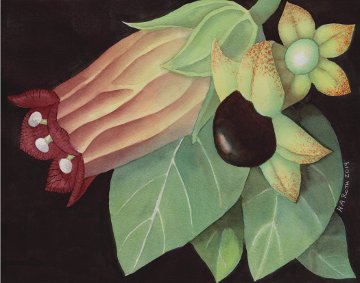|
Belladonna is a traditional West European magick herb associated with Saturn, like its cousins hellebore, henbane, and mandrake. As one of the baneful herbs, it is used in works concerning death and death's opposite - healing. The name "Belladonna" is said to be derived from the fact that Italian women at one time made drops from the plant which caused their pupils to dilate and thus made them more desirable, but perhaps it is instead a reference to this plant's dedication to the Goddess (the Beautiful Lady) and historically it was used in rituals honoring a Roman goddess of war, Bellona. Even now, parts of this plant are helpful inclusions in fumes dedicated to making war. European witches used this plant in flying ointments, extracting its constituents into fat and rubbing it on the skin, so it had a place in every witch's garden. It is still traditionally associated with astral projection, but this plant is especially Saturnian in that it is said to create feelings of heaviness rather than lightness, being dragged down to the ground rather than flying. In traditional witchcraft, belladonna is typically sung to upon harvesting. Some even dance naked in front of the plant. This is in keeping with some cultures' use of belladonna for sex magick. But always use caution! Many consider belladonna to be the single most tricky of all the nightshades. We love it, and it is a beauty, but we would never think of ingesting it.
|
Atropa belladonna Deadly Nightshade 100 seeds $4.50 |
Alchemy Works products are offered for use in spiritual, ritual, meditative, and magical practices, not for medicinal or cosmetic purposes. The information on this website is provided for its folkloric, historic, and magical value. It is not intended to be a substitute for professional medical advice, diagnosis, or treatment.
 Atropa belladonna
Atropa belladonna